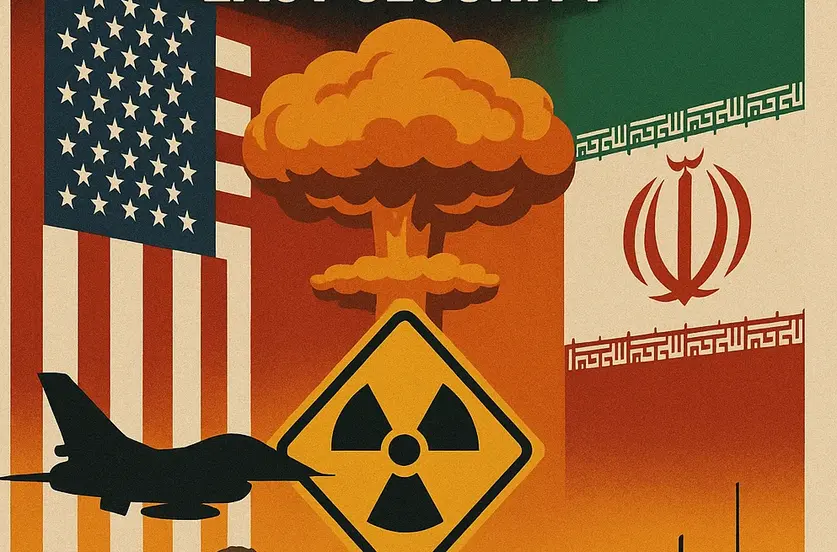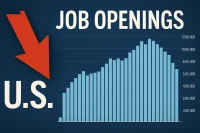The United States has ordered non-essential employees to evacuate its embassy in Baghdad, marking a significant escalation in US-Iran Nuclear Tensions 2024. This decision follows a State Department evaluation of regional security concerns as negotiations over Tehran’s nuclear program appear increasingly precarious. The withdrawal of diplomatic personnel signals growing concerns about potential military confrontation between these long-standing adversaries.
President Donald Trump has issued explicit threats to strike Iran if diplomatic efforts fail, while Iranian officials have responded with warnings of retaliatory actions against US military installations throughout the region. This dangerous cycle of threats has transformed routine diplomatic disagreements into a potential military crisis with far-reaching implications for global security.
The Diplomatic Breakdown: Understanding the Current US-Iran Nuclear Tensions 2024
Embassy Evacuation: A Warning Signal
The Baghdad embassy has taken the extraordinary step of advising American citizens against traveling to Iraq, as personnel movements out of the Middle East accelerate. When questioned about these developments, President Trump acknowledged the potential dangers, stating: “They are being moved out because it could be a dangerous place. We’ve given notice to move out, and we’ll see what happens.”
These precautionary measures reflect intelligence assessments suggesting that:
- Diplomatic negotiations have reached a critical impasse
- Military contingency plans are being activated on both sides
- Regional allies are preparing for potential conflict scenarios
- Civilian personnel face increased security risks
The Israeli Factor: A Complex Triangular Relationship
The US-Iran Nuclear Tensions 2024 are further complicated by Israel’s strategic interests and potential military actions. According to Middle East analyst Sheni Rosanis, American media reports suggest that the diplomatic withdrawal may be connected to concerns about imminent Israeli military action against Iran.
Netanyahu’s Strategic Calculations
Israeli Prime Minister Benjamin Netanyahu has built much of his political career around addressing what he perceives as the existential threat posed by Iran’s nuclear ambitions. His position has grown increasingly hardline as negotiations between the US and Iran continue:
- Netanyahu considers any negotiation with Iran “completely outrageous”
- He has engaged in “heated discussions” with Trump administration officials
- Israeli leadership believes there is only a “small window of time” for effective action
- Direct military confrontations between Israel and Iran have already occurred in the past year
“Netanyahu feels that Iran is now in a very weak position,” explains Rosanis, “and the longer the US and Israel wait, the stronger it gets, and that narrow window of opportunity will be closing.”
The Nuclear Standoff: Enrichment as Leverage
At the heart of US-Iran Nuclear Tensions 2024 lies the fundamental disagreement over uranium enrichment. Iran recently announced plans to significantly boost production of enriched uranium, a direct response to criticism from the International Atomic Energy Agency (IAEA).
Iran’s Defiant Position
Iranian leadership has taken an increasingly defiant stance regarding its nuclear program:
- The Supreme Leader has rejected American proposals as “completely against Iranian interests”
- Iran considers uranium enrichment on its soil a “non-negotiable right”
- The country has responded to IAEA condemnation with accelerated enrichment
- Iranian officials have publicly challenged US threats with “just try us” rhetoric
This position represents a direct challenge to President Trump’s stated objective of preventing Iran from developing nuclear weapons capabilities. “Trump seems quite adamant in breaking Iran,” notes Rosanis, “saying you’re not going to get a nuclear weapon whether we talk to you or whether we’re going to have to attack you.”
Diplomatic Efforts: Last Chance for Peace?
Despite the escalating US-Iran Nuclear Tensions 2024, diplomatic channels remain open, with negotiations scheduled in Oman. President Trump’s chief adviser, Steve Witkov, is expected to lead these discussions, representing what could be a final opportunity to prevent military confrontation.
Negotiation Challenges
The upcoming talks face significant obstacles:
- Iran refuses to abandon uranium enrichment capabilities
- The US considers this position a “non-starter”
- Both sides are using threats as negotiating leverage
- Regional allies have conflicting strategic interests
- Public statements from both sides have hardened positions
“Despite the very big divide in where both sides are standing, nobody wants to step back from negotiation just yet,” Rosanis observes, suggesting that while rhetoric has escalated, both parties recognize the catastrophic potential of armed conflict.
Regional Implications of US-Iran Nuclear Tensions 2024
The current standoff extends far beyond bilateral relations, with profound implications for the entire Middle East security architecture. Countries throughout the region are carefully calibrating their positions as tensions escalate.
Strategic Realignments
The US-Iran Nuclear Tensions 2024 are forcing regional powers to reassess their strategic calculations:
- Iraq finds itself caught between American and Iranian influence
- Gulf states are evaluating their security relationships with the United States
- Israel is pursuing an increasingly independent security policy
- European allies are attempting to salvage diplomatic solutions
- Russia and China are monitoring developments for strategic opportunities
These shifting alignments create additional complexity in an already volatile region, where miscalculation could trigger broader conflict with global consequences.
Historical Context: A Pattern of Confrontation
To understand the current US-Iran Nuclear Tensions 2024, it’s essential to recognize the historical pattern of confrontation between these nations. The relationship has been characterized by mutual distrust since the 1979 Islamic Revolution and subsequent hostage crisis.
Cycles of Engagement and Hostility
The diplomatic history between the United States and Iran reveals:
- Periods of limited engagement followed by renewed hostility
- Failed attempts at normalization under multiple administrations
- Sanctions regimes of varying intensity and effectiveness
- Proxy conflicts throughout the Middle East
- Fundamental disagreements about regional security architecture
This historical context helps explain why current negotiations face such significant obstacles, as decades of mutual suspicion have created deeply entrenched positions on both sides.
The Role of International Organizations
International bodies like the International Atomic Energy Agency (IAEA) play a crucial role in monitoring and verifying compliance with nuclear agreements. Their assessments provide important technical context for the political dimensions of US-Iran Nuclear Tensions 2024.
IAEA Concerns
Recent IAEA statements have highlighted several areas of concern:
- Iran’s failure to comply with Nuclear Non-Proliferation Treaty (NPT) requirements
- Insufficient disclosure about nuclear facilities
- Accelerated enrichment activities
- Limited inspector access to key sites
- Technical capabilities approaching weapons-grade potential
These technical assessments provide the factual foundation for diplomatic positions, though both sides interpret the data through their own strategic lenses.
Public Messaging and Perception Management
Both the United States and Iran are engaged in sophisticated public messaging campaigns designed to shape domestic and international perceptions of the conflict. These communications strategies reveal important aspects of each nation’s approach to the crisis.
Competing Narratives
The public dimensions of US-Iran Nuclear Tensions 2024 include:
- American emphasis on Iranian non-compliance and threat potential
- Iranian portrayal of resistance against imperial aggression
- Israeli warnings about existential security threats
- European calls for de-escalation and diplomatic solutions
- Regional powers balancing relationships with both sides
These competing narratives influence public opinion, political decision-making, and the diplomatic space available for potential compromise.
Looking Forward: Pathways to Resolution
While the current US-Iran Nuclear Tensions 2024 present significant challenges, historical precedent suggests that even the most intractable conflicts can find diplomatic resolution when sufficient political will exists.
Potential Breakthrough Scenarios
Several pathways could lead to de-escalation:
- Face-saving compromises on enrichment limitations
- Phased sanctions relief tied to verifiable compliance
- Regional security guarantees involving multiple stakeholders
- Back-channel negotiations away from public scrutiny
- Third-party mediation by neutral international actors
“Despite the escalation nobody wants to see in the region,” notes Rosanis, suggesting that rational self-interest may ultimately prevail over confrontational rhetoric.
For more insights on global security issues, read our analysis on how economic factors influence international relations and military spending trends that shape geopolitical dynamics.




